Key Messages about Climate Change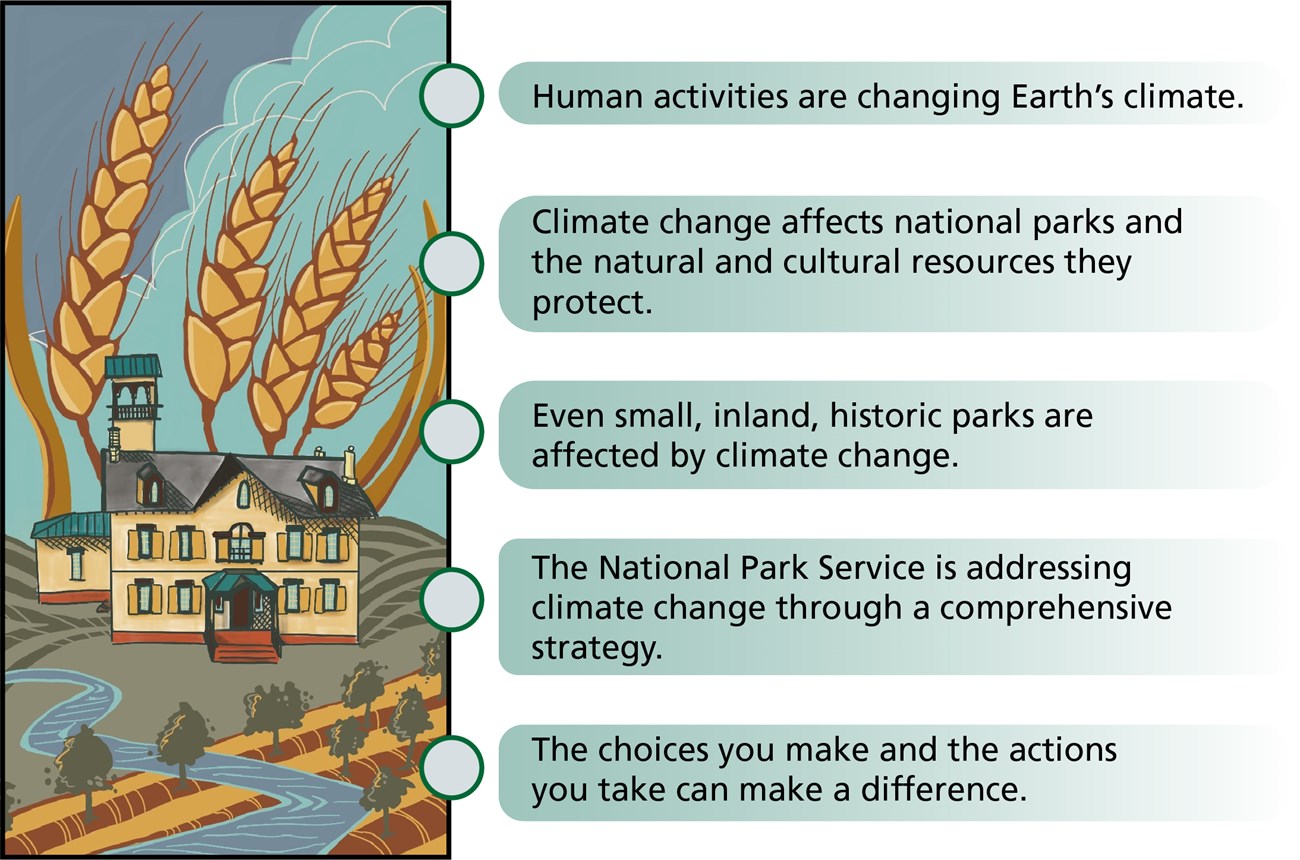
Adapted from a graphic by Carolyn Caggia, NPS. Graphic art by Jen Strona, NPS.
According to scientific consensus, Earth’s climate is warming, and effects of climate change are being observed across the globe. The National Park Service recognizes climate change as a major threat to national park units and is taking a holistic approach in responding to climate change—climate change considerations are being incorporated into all aspects of daily operations. The agency has developed a Climate Change Response Strategy that describes goals and objectives to guide its actions under four integrated components: 1) science (to increase understanding of climate change), 2) adaptation (to adapt to climate change with planning and management strategies), 3) mitigation (to reduce greenhouse gas emissions with high standards for energy efficiency), and 4) communication (to communicate about how climate change can affect resources in parks). A changing climate impacts not only natural resources, but also cultural resources, such as historic buildings and artifacts, as well as scenic views, park infrastructure, visitor experience, and human safety. At many park units, including Martin Van Buren National Historic Site (NHS), natural resources are an integral part of the cultural landscape. What types of effects are occurring now at Martin Van Buren NHS or are expected in the future? And how are we planning for and dealing with the effects of climate change? Martin Van Buren National Historic Site and its ResourcesMartin Van Buren NHS preserves and interprets the rural estate of the eighth President (1837-1841) of the United States. Martin Van Buren and his family lived at Lindenwald, the name the President gave the house and farm, from 1841 to 1862. The historic site is located in the Hudson River Valley in the town of Kinderhook, Columbia County, New York. It interprets Van Buren’s life and career, issues facing the nation in the decades prior to the Civil War, and historical and modern progressive farming. The 285-acre historic site is a working agricultural landscape. Roxbury Farms, which owns and operates an organic vegetable farm, also leases 20+ acres of the park under conservation easement and in cooperation with the NPS. Resources at the historic site that could be affected by climate change include both natural and cultural resources, such as water resources (like Kinderhook Creek, which flows through the park, wetlands, and constructed water features), trees and other plants (including a historic sycamore tree), agriculture, the Lindenwald mansion and outbuildings, archeological resources, and historic views. Climate change can also affect phenology, which is the timing of cyclic and seasonal natural phenomena, especially in relation to animal and plant life; changes in phenology could affect native plants and the animals dependent on them, and agricultural crops and their pollinators (read more about this below). 
Agricultural field at Martin Van Buren NHS (right). NPS Photos. How has the climate at Martin Van Buren NHS changed over the last 100 years? And what are projections for the future?
Climate change actions at Martin Van Buren NHSMartin Van Buren NHS is taking action and implementing the NPS Climate Change Response Strategy. We conducted an assessment to synthesize information about current and projected climate change-related impacts at the park. The assessment report (Tierney 2021) is helping us understand, plan, and manage for climate change. Here are some of the things we’re doing:Historic OrchardWe are planning to restore a historic, 5-acre orchard near the mansion. We are carefully considering what types of fruit trees to plant, as some will be better at adapting to the area’s changing climate. For instance, climate change may lead to a shift to earlier bloom dates of fruit trees in the region. Such a shift could increase damage from early spring cold temperatures, as well as create a potential mismatch between emergence times of flowers and key pollinators. In addition to selecting tree cultivars (or varieties) that are resistant to frost and drought, we will also consider the placement of plantings and the use of coverings or windbreaks to maximize frost protection. 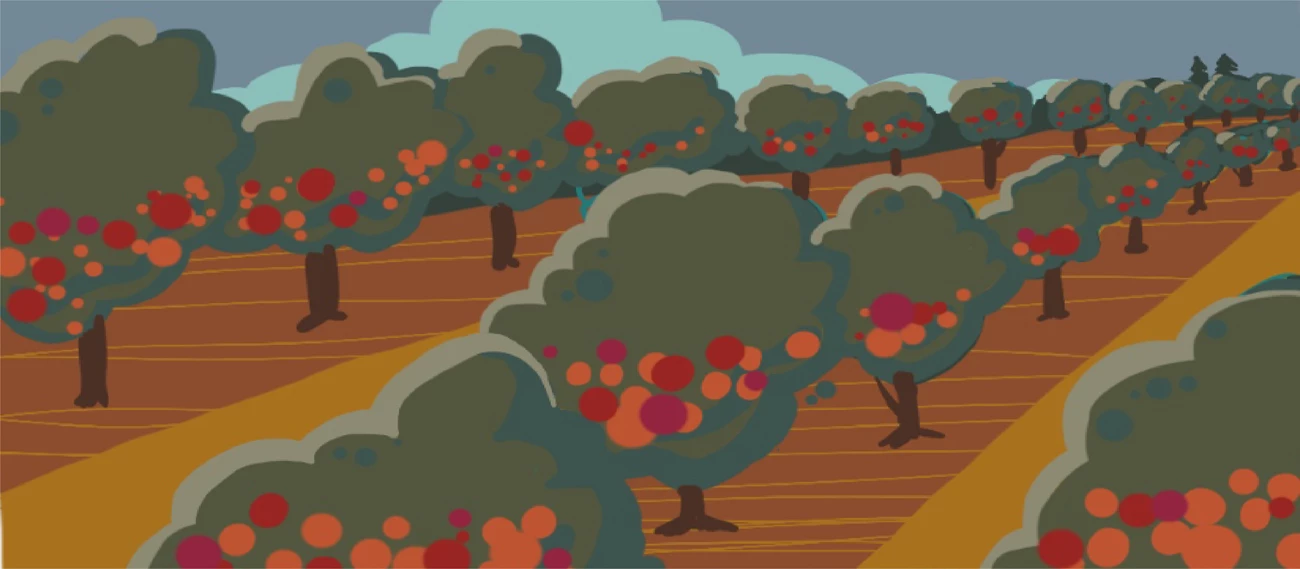
TreesNative trees are a natural resource and an important component of the cultural landscape at Martin Van Buren NHS. To plan for potential climate change impacts on trees, the recent climate assessment looked at which tree species at the park and in the region are most susceptible to climate change. Based on U.S. Forest Service modeling, the study found that about one-third of tree species currently occurring in the park are capable of adapting to projected regional climate change by 2100 (such as American sycamore and red maple), while another one-third of park tree species have poor capability to adapt (such as Eastern white pine and green ash). We are already monitoring the condition of trees that are part of the historic landscape; going forward, this monitoring will continue and probably expand. The future landscape may look different, and monitoring will enable visitors to see how much it has changed since Martin Van Buren’s time. Historic StructuresHistoric structures such as the mansion and related buildings will be subjected to rising temperatures, increased rainfall and extreme weather events, higher relative humidity, increased freeze/thaw cycles, and more seasonal drought and flooding. Structures may experience various effects, such as:
Some damage has already occurred to the basement rooms in the mansion (see photos below). 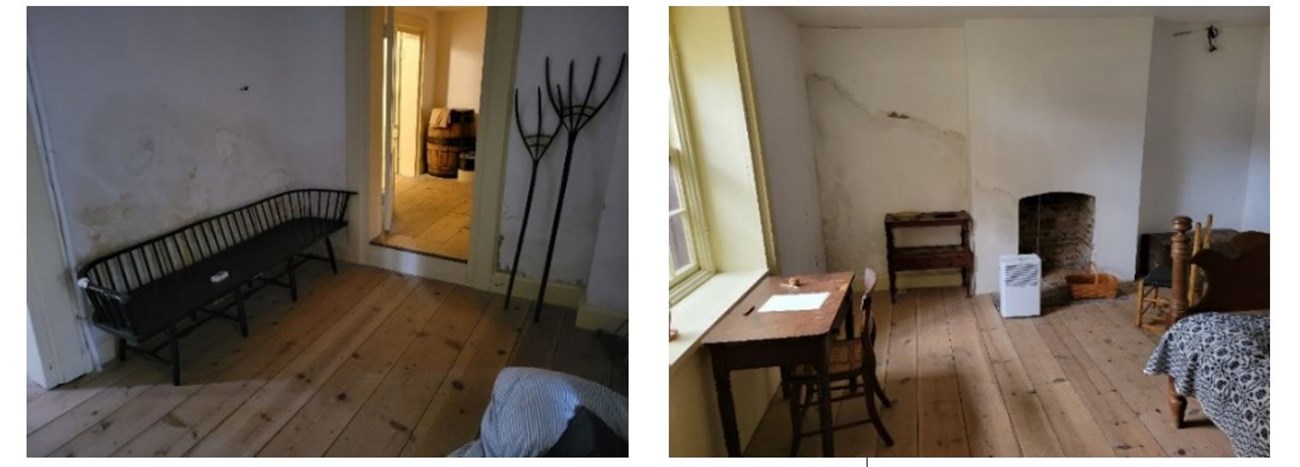
NPS Photos. To better understand the building’s behavior with regard to the exterior climate, we have been tracking humidity and temperature levels in the mansion for several years. In 2021, we added Wi-Fi and Wi-Fi-enabled monitors so environmental conditions can be monitored remotely. The data obtained are used by NPS staff to track conditions, trends, and areas in the building where the microclimate is problematic to the collection. The system also generates on-line alerts when environmental conditions pose risks to certain types of collection items, such as paper or fabric. 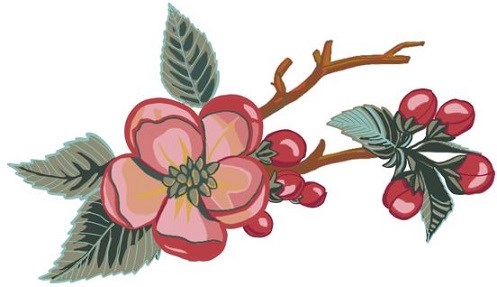
PhenologyIn partnership with the Farmscape Ecology Program, we developed interpretive panels for a walking trail at the historic site. The panels educate visitors on changes in phenology that are occurring. For example, people have been recording the life cycle stages of pear trees in Kinderhook and surrounding areas since before Martin Van Buren lived at Lindenwald. An observation over this time period (from 1830 to 2021) is that pear trees are now flowering approximately 2 weeks earlier than in 1830.
AgricultureAgriculture is an integral part of the cultural landscape at Martin Van Buren NHS, so impacts to agriculture are of great interest to park managers. Climate change can cause:
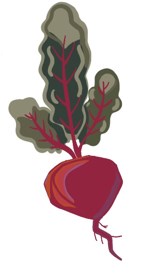
We have also partnered with the Farmscape Ecology Program to monitor animals such as bees. Bees are important pollinators of native plants, orchard trees, and farm crops. 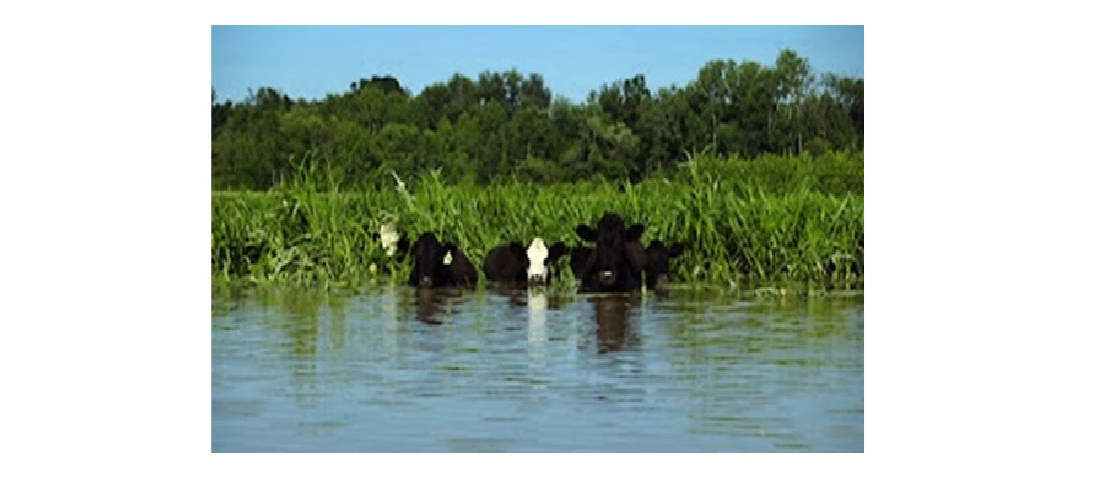
Photo by Roxbury Farm. Additional actions and programsIn 2021, the NPS Northeast Archeology Resources Management Program piloted the Volunteer Archeology Monitoring Program at the historic site. This program will continue into the future and will help us with monitoring all threats, including ones exacerbated by climate change, to archeological sites. LEARN MORE about climate change in national parksLearn how climate change is impacting other national parks across the country on this NPS page and in this recent publication (Gonzalez 2020, Human-caused climate change in United States national parks and solutions for the future, Park Stewardship Forum).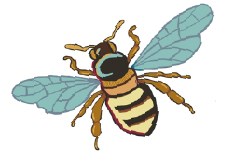
Things YOU CAN DO about climate changeThere are things you can do to take action against climate change and support sustainable practices. These actions include ones you can take when visiting national parks, as well as at home. The links below are full of good ideas. Check them out to learn more!

The NPS also has a page on supporting sustainability in national parks, which includes ways to minimize your environmental impact (such as on plants and animals) when visiting. If you’d like still more ideas on what individuals can do about climate change, the Environmental Protection Agency (EPA) has a page that addresses actions in several different areas, including transportation, energy, water, and waste.
Information in this article was summarized mainly from G. Tierney. 2021. Climate Change Trends and Impacts at Martin Van Buren National Historic Site: Focused Condition Assessment Report. Natural Resource Report NPS/MAVA/NRR—2021/2344. National Park Service, Fort Collins, Colorado. References* Information in this article that is specific to climate change and impacts at Martin Van Buren NHS came from Tierney (2021). Other references listed here are as cited in Tierney (2021). |
Last updated: November 15, 2022
